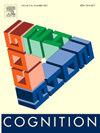The origin of cognitive modules for face processing: A computational evolutionary perspective
IF 2.8
1区 心理学
Q1 PSYCHOLOGY, EXPERIMENTAL
引用次数: 0
Abstract
Despite extensive research, mechanisms underlying the emergence of cognitive modules remains elusive due to the complex interplay of genetic, developmental, and environmental factors. Computational modeling, however, provides a means of exploring their origins by simulating manipulations on these factors. In this study, we aimed to investigate the emergence of cognitive modules by developing the Dual-Task Meta-Learning Partitioned (DAMP) model, whose plastic architecture facilitates automatic structure optimization through a genetic algorithm that simulates natural selection by iteratively selecting for efficient learning fitness. We found that a specialized module for face identification robustly emerged in the DAMP model. Critically, the emergence of cognitive modules was not exclusive to faces in individual-level identification tasks. Rather, modular structures formed across all tested object categories in both categorization and identification tasks within our model. Interestingly, the formation of these modules was strongly influenced by the structural constraint of sparse connectivity within the network, suggesting that modularity may arise as an adaptation strategy to cope with the limitations imposed by sparse connections in biological neural networks. These findings provide a new evolutionary perspective on the development of cognitive modules in the human brain, highlighting the pivotal role of neural network structural properties in shaping cognitive functionality.
人脸处理的认知模块的起源:一个计算进化的视角
尽管进行了广泛的研究,但由于遗传、发育和环境因素的复杂相互作用,认知模块出现的机制仍然难以捉摸。然而,计算建模通过模拟对这些因素的操纵,提供了一种探索其起源的方法。在本研究中,我们旨在通过开发双任务元学习分区(DAMP)模型来研究认知模块的出现,该模型的塑性结构通过遗传算法模拟自然选择,通过迭代选择实现有效的学习适合度,从而促进自动结构优化。我们发现,在人脸识别模型中稳健地出现了一个专门的人脸识别模块。关键的是,认知模块的出现并不是个人层面识别任务中面孔所独有的。更确切地说,在我们模型中的分类和识别任务中,模块结构在所有被测试对象类别中形成。有趣的是,这些模块的形成受到网络内稀疏连接的结构约束的强烈影响,这表明模块化可能作为一种适应策略而出现,以应对生物神经网络中稀疏连接所施加的限制。这些发现为人类大脑认知模块的发展提供了一个新的进化视角,突出了神经网络结构特性在形成认知功能中的关键作用。
本文章由计算机程序翻译,如有差异,请以英文原文为准。
求助全文
约1分钟内获得全文
求助全文
来源期刊

Cognition
PSYCHOLOGY, EXPERIMENTAL-
CiteScore
6.40
自引率
5.90%
发文量
283
期刊介绍:
Cognition is an international journal that publishes theoretical and experimental papers on the study of the mind. It covers a wide variety of subjects concerning all the different aspects of cognition, ranging from biological and experimental studies to formal analysis. Contributions from the fields of psychology, neuroscience, linguistics, computer science, mathematics, ethology and philosophy are welcome in this journal provided that they have some bearing on the functioning of the mind. In addition, the journal serves as a forum for discussion of social and political aspects of cognitive science.
 求助内容:
求助内容: 应助结果提醒方式:
应助结果提醒方式:


